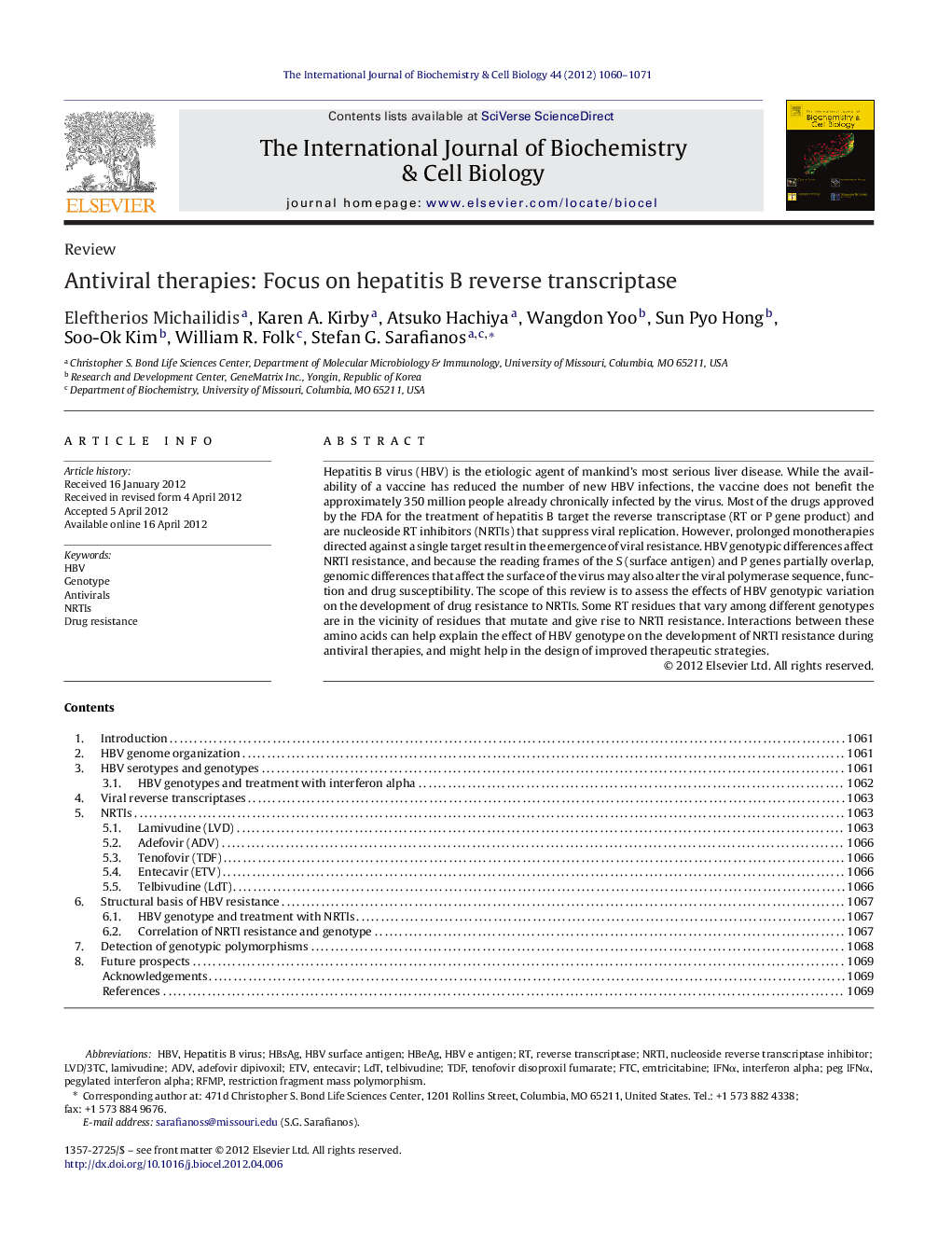| Article ID | Journal | Published Year | Pages | File Type |
|---|---|---|---|---|
| 8324597 | The International Journal of Biochemistry & Cell Biology | 2012 | 12 Pages |
Abstract
Hepatitis B virus (HBV) is the etiologic agent of mankind's most serious liver disease. While the availability of a vaccine has reduced the number of new HBV infections, the vaccine does not benefit the approximately 350 million people already chronically infected by the virus. Most of the drugs approved by the FDA for the treatment of hepatitis B target the reverse transcriptase (RT or P gene product) and are nucleoside RT inhibitors (NRTIs) that suppress viral replication. However, prolonged monotherapies directed against a single target result in the emergence of viral resistance. HBV genotypic differences affect NRTI resistance, and because the reading frames of the S (surface antigen) and P genes partially overlap, genomic differences that affect the surface of the virus may also alter the viral polymerase sequence, function and drug susceptibility. The scope of this review is to assess the effects of HBV genotypic variation on the development of drug resistance to NRTIs. Some RT residues that vary among different genotypes are in the vicinity of residues that mutate and give rise to NRTI resistance. Interactions between these amino acids can help explain the effect of HBV genotype on the development of NRTI resistance during antiviral therapies, and might help in the design of improved therapeutic strategies.
Keywords
AdVRFMPIFNαHBV e antigenNRTIsNRTIEmtricitabineHBsAgHBeAgETVTDFFTCLDTadefovir dipivoxilHBV surface antigenEntecavirinterferon alphapegylated interferon alphaReverse transcriptasetelbivudinetenofovir disoproxil fumarateAntiviralsLamivudineDrug resistancenucleoside reverse transcriptase inhibitorHBVhepatitis B virusGenotype
Related Topics
Life Sciences
Biochemistry, Genetics and Molecular Biology
Biochemistry
Authors
Eleftherios Michailidis, Karen A. Kirby, Atsuko Hachiya, Wangdon Yoo, Sun Pyo Hong, Soo-Ok Kim, William R. Folk, Stefan G. Sarafianos,
